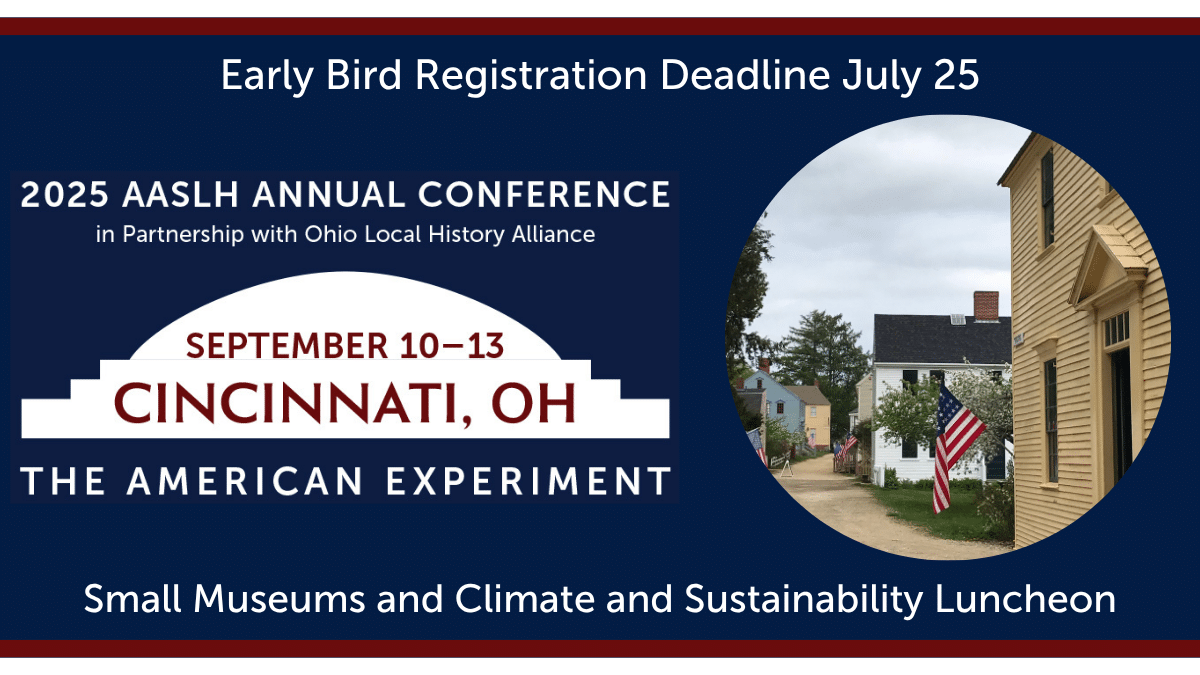Some may regard maintenance and renovation work – with all of its noise, dust and intrusion – as a necessary evil. It just “seems” to run counter to what museums are “supposed” to do.
Ah, but there’s another way to look at this upheaval in our daily routines. Turn all that activity into a learning opportunity!
There’s no escaping the presence of your work crews. Demolition, equipment operations, material deliveries, safety fences, and hard hats are the realities of this work. This isn’t done by little elves waving magic wands in the middle of the night. Still, there’s no reason to keep work on your structures or surroundings out of the public’s view or awareness.
Give your visitors an insight into how you make decisions. Share all work with your visitors, either onsite or through your website. People don’t mind change as long as that change is positive and permanent (at least “permanent” from the visitors’ point-of-view; we history and museum folks have a slightly different definition and perspective).
You’re already taking notes and pictures of the work for your museum’s records anyway, aren’t you? (If not, you should.) Your successors will need (and thank you for) this information twenty, fifty, or a hundred years from now.
Break out of the mold! Get creative! Post daily progress reports. Show photographic copies of the “what”, “how” and “why”: the problems you want to fix, the visions and blueprints, the finished product, and the reasons why you’re doing this work.
While this process may seem unfamiliar or even burdensome, it isn’t exactly alien. It can become a vital part of your visitors’ overall museum experience. You’re fulfilling the mission and adopting best practices by
- striking a balance between human use and nature,
- incorporating preservation standards into your ongoing maintenance programs, and
- acknowledging the role and importance of change in history.
Maggie Marconi recalls how, when her facility expanded, they adopted a mascot to symbolize the project. They then posted this mascot on all newsletters, memos, and progress reports.
Building and renovation projects are also opportunities to promote community outreach and a sense of ownership. Invite members of the community (especially kids) to an event where visitors sign their names on structural beams. By coordinating schedules with the contractor, you could turn this into something for a weekend or evening fundraising event.
Let the construction workers know how much you appreciate their work by giving them a free museum membership. They may even return to the site with their families, take a tour, bring their friends, and buy more memberships. From a tradesman’s perspective, nothing beats showing your spouse and kids the fruits of your labors. They’ll never see your museum as “just another job site”; they’ll come away with a genuine sense of ownership.
Investments come in different forms. After all, we are in the posterity business.
For a more detailed discussion, check out “Straight Talk About Historic Structures and Landscapes,” in the Small Museum Toolkit, published by AltaMira Press.
Bruce Teeple is a freelance writer, editor, local historian, speaker, gardener, wine maker, chicken farmer, and columnist for the Centre Daily Times in State College. Pennsylvania. A graduate of Penn State in history and political science, he served for nineteen years as curator of the Aaronsburg Historical Museum before joining AASLH’s Small Museums Committee. He is currently researching and writing As Good as a Handshake: the Farringtons and the Political Culture of Moonshine in Central Pennsylvania. His latest work is “Slavery In Post-Abolition Pennsylvania….And How They Got Away With It.”



